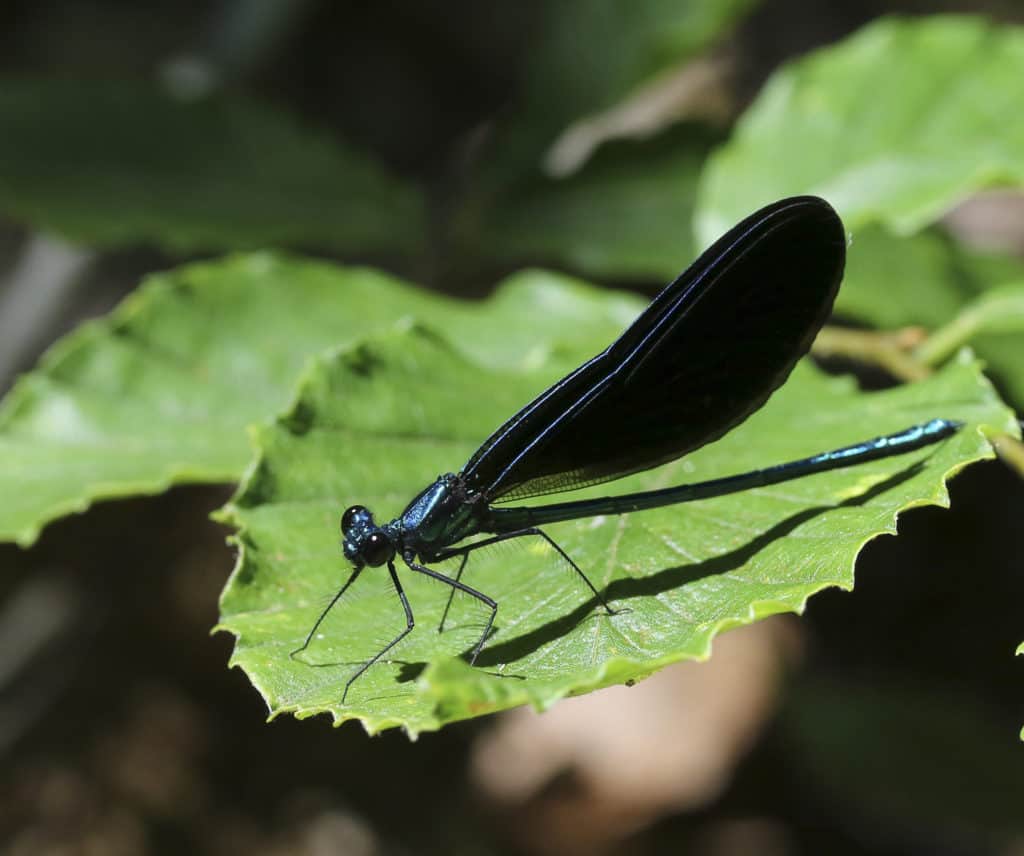Creature Feature

Finding Jewels Along a Stream
By Wayne Bierbaum
While walking around a stream at the Glendening Nature Preserve in Lothian, a bright shiny damselfly seems to lead the way up the trail. It would fly 10 to 20 feet and land, seemingly waiting for me to catch up. This went on for quite a while, over 500 feet, and I was able to take several photos.
A damselfly differs from a dragonfly because its wings will fold next to its body and its eyes are on each side of its head. They also tend to be thinner and smaller than a dragonfly.
The damselfly that I was following was an ebony jewelwing. They are black with brilliant blue-green markings on the wings and body. The female is paler than the male and has rectangular white patches at the tips of its wings. They are some of the larger species of the damselfly family and are easily spotted as they slowly fly while looking for insects to eat. The jewelwing lives along freshwater streams and occasionally lakes in the eastern U.S. It is more commonly found in older forested areas with dense vegetation next to the streams. They are rarely out in the bright sunshine.
The damselfly spends most of its life in freshwater. In early summer, a female will lay 600 eggs underwater, attached to plants. The young will eat other aquatic insects, grow and in the late spring of the following year, emerge from the water, break through a hardened exoskeleton and become an insect with beautiful wings. The genus name for these damselflies, Calopteryx, is derived from the Greek word kalos, meaning beautiful, and ptery, meaning winged.
Seeing the ebony jewelwing at the Glendening Nature Preserve was a real treat. I have also seen them often along streams in western Maryland, on the Gunpowder River, and along the Susquehanna River.
